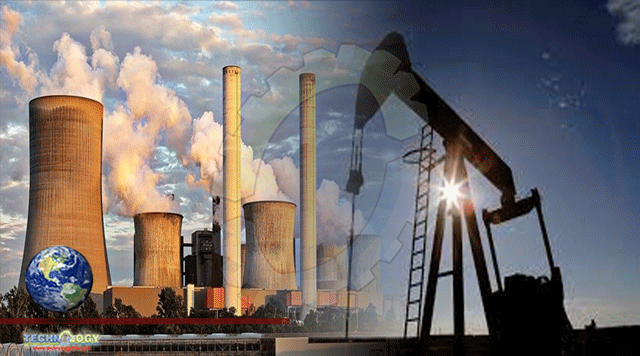For a world eager to emerge from the pandemic, this autumn’s dismal cocktail of economic developments harkens back to darker decades. There is a worldwide energy crisis , affecting basically every fuel, with rationing and blackouts in places around the globe. Some store shelves are empty. Some gas stations are dry. Supply chains are wheezing, and container ports are overwhelmed and underworking. Inflation is again rearing its head after years in abeyance.

The good news is the 1970s aren’t back just yet. The bad news is this fall’s energy crisis may be a harbinger of what’s to come: years of rising prices, pinched consumers, and struggling businesses.
Crude oil is more than $85 a barrel, its highest level since 2018. The price of natural gas is sky-high, especially in Europe, where it has roughly doubled since the summer and is four times pricier than one year ago. The price of coal is soaring, with the cost of coal in China regularly breaking records and Australian ore doubling since the spring.
The basic driver is a mismatch between demand, which has come roaring back after the world basically went on lockdown for a year, and supply, which has yet to recover. Globally, oil investment in new production capacity is still well below the level it was pre-pandemic—and even that was much lower than the boom years before 2014. Another change in recent years has been the reluctance of U.S. shale oil producers to turn on the taps immediately after oil prices go up; instead, burned by years of poor returns, shale producers have, for the most part, kept strict financial discipline, which has kept U.S. oil output below pre-pandemic levels. Similar dynamics affect gas production, with the twist that Europe’s main supplier—Russia—has been essentially standing on the hose in recent months, limiting extra gas supplies for export to Europe, which has kept prices at record levels.
All of that has been aggravated by extreme weather, which has hampered coal production, hammered Scandinavian hydroelectric generation, led to decreased wind power production, and spiked natural gas demand. Caught in the middle are consumers, many of whom are paying record prices for power, and businesses, some of which are having to curtail production or lay off workers.
“What we’re seeing this winter is a warm up, a rehearsal of a bigger structural problem we’re going to have,” said Bob McNally, founder and president of Rapidan Energy Group, a consultancy. “This is how energy markets behave when you have demand meeting insufficient supply.” There are a lot of short-term issues that have caused oil and gas prices to spike, including extreme weather, which could ease in coming months. But due to years of underinvestment in oil production capacity, the world could be left struggling to meet still-rising demand for fossil fuels. “This is going to recur in a way that is going to be more reminiscent of the 1970s,” he said.
The energy crunch is aggravating two nasty bits of the world’s COVID-19 recovery and limited economic activity associated with it. As consumers emerged from lockdown with money to spend, inflation naturally ticked higher. But rising energy crisis is driving inflation even higher than that—and almost everywhere: The eurozone has more than 3.4 percent inflation, the United Kingdom expects 4-plus percent inflation, prices in the United States are up more than 5 percent compared to last year, and Russian inflation is topping 7 percent. China’s factory-gate inflation—a measure of how much companies pay for goods—is rising at the fastest clip in 25 years.
Plus, the energy crisis is also making the ongoing supply chain situation even worse. In China, power outages have led to reduced output at factories, with ripple effects on buyers around the world. In Europe, high energy prices have forced some producers—like steel works or makers of fertilizer—to scale back output.
The dicey supply situation, itself a product of the long lockdown and disruptions to manufacturing and distribution, continues to weigh on the economic recovery. “The long, repeated, and uncertain shutdowns led to a scaling-down of inventories, shipping capacity, workers leaving the logistics industry, and a hesitancy in ramping everything back up,” said Richard Baldwin, an economics professor at the Graduate Institute in Geneva. “Now that consumption is roaring back, there is whiplash in the supply chain.”
And that whiplash is taking a toll: Shortages of key components like semiconductors led the eurozone’s industrial output to fall at the end of the summer, and consumer confidence in big economies, such as Germany, is now slipping.
Originally published by FP